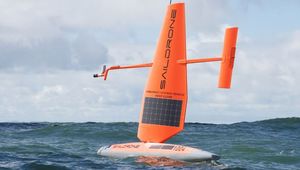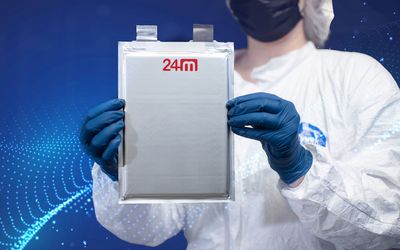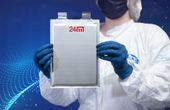G9KB-E PCB Power Relays High-Capacity Model
High-power DC, PCB relays with bidirectional 800VDC capacity and 100A switching.
Technical Specifications
| Product | PCB Power Relays |
| Max. Switching Current | 100 A |
| Max. Switching Voltage | 800 VDC |
| Contact Gap | 3.6 mm or more |
| Ambient Temperature | 85°C |
| Contact Resistance | ≤5 mΩ |
| Applications | EV Charging, Energy Storage System, V2X (V2H, V2B, etc.), DC Household Appliances |
Overview
The G9KB series by Omron are high-power PCB relays designed to handle direct current (DC) loads. The high-capacity G9KB-E product has a bidirectional capacity of 800 VDC and a current rating of 100 amps. This high capacity and switching capability makes it ideal for EV Charging among other applications like solar power generation, energy storage, and other high-power DC equipment.
The G9KB series is developed with high-performing arc cut-off technology to combat contact arcing, typically with large DC power applications. This eliminates the need for two relays in the case of DC forward/reverse currents. The G9KB series can operate in environments up to 85°C and comes in coil voltage options of 12VDC or 24VDC. These power relays are built to ensure safety, complying with UL60947-4-1 and EN61810-10 standards, critical for EV charging and other energy storage systems.
G9KB PCB Power Relays Features
High Capacity Switching and Bidirectional Capability
The G9KB-E PCB Power Relay is designed to handle direct current (DC) applications on printed circuit boards (PCBs). It acquires a high capacity of 800VDC, and a 100A current rating, capable of handling up to 80 kW of continuous power flow. An important feature is its bidirectional switching capability, eliminating the need for multiple switching components to alternate forward and reverse currents. The relay can safely interrupt the current in both circuit directions, a crucial requirement for battery discharge applications and regenerative systems.
Built for Safety and Efficiency
Safety is paramount in high-power DC applications. The G9KB series follows safety standards, including UL60947-4-1 and EN61810-10, specifically designed for solar and energy storage system components. Furthermore, they feature low contact resistance, minimizing voltage drop and heat generation during operation. This translates to lower power losses and improved system efficiency. The relays feature low-coil power consumption, reducing the overall power draw of the control circuit. For example, the G9KB series can reduce power consumption to 560 mW from 3.4 W, when held at 45% of their rated voltage.
Operational Flexibility and Environmental Tolerance
The G9KB-E PCB Power Relay offers versatility for various applications. It can operate in environments with ambient temperatures reaching 85°C, making it suitable for demanding industrial settings. The relay is available with coil voltage options of 12VDC or 24VDC, providing compatibility with a wide range of control systems. This flexibility allows easier integration into existing DC power systems without requiring significant design changes.
Getting Started with G9KB-E PCB Power Relays
Follow these instructions to get started with G9KB-E PCB Power Relays:
Understanding Your Requirements:
Voltage and Current: Ensure the chosen G9KB-E PCB Power Relay matches your application's voltage (up to 800VDC) and current requirements (up to 100A).
Coil Voltage: Select the appropriate coil voltage (12VDC or 24VDC) based on your control system's power supply.
Switching Configuration: Determine if the Single Pole, Single Throw (SPST) Normally Open (NO) configuration of the G9KB-E Power Relay aligns with your switching needs.
Design and Layout:
PCB Footprint: Ensure your PCB layout has enough space to accommodate the G9KB-E PCB Power Relay's footprint as specified in the datasheet.
Soldering Considerations: Follow recommended soldering profiles and techniques to ensure proper connection of the relay's terminals to the PCB.
Heat Management: Depending on your application's load and duty cycle, consider adding heatsinks to the relay package to manage thermal dissipation.
Driving and Control:
Control Circuit Design: Design your control circuit to provide sufficient current to activate the relay coil based on its voltage rating. Use appropriate flyback diodes to protect against voltage spikes when deactivating the coil.
Safety Precautions: Implement safety measures like overload protection and proper system grounding to ensure safe operation, especially when working with high-power DC applications.
Testing and Verification:
Perform Visual Inspection: Ensure the relay is properly soldered and has no loose components or visible damage.
Functional Testing: With appropriate safety precautions, apply power to the control circuit and verify the relay switches as intended. Measure coil current and voltage to ensure they fall within expected ranges.
Following these steps and referring to the datasheet, users can successfully integrate G9KB-E PCB Power Relay into their high-power DC applications.








